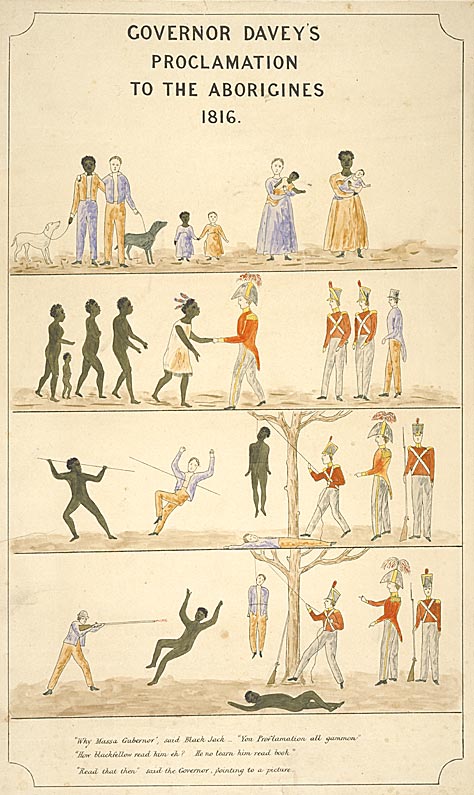 A proclamation to Indigenous Australians, 1829
A proclamation to Indigenous Australians, 1829
TLF ID R4384
This is a hand-coloured lithograph made in 1886, measuring 42.3 cm x 25 cm, based on an original timber panel made at the request of Governor George Arthur (1784-1854) in 1829. It depicts a comic-style narrative in four strips of drawings. Intended to be read from bottom to top, the drawings show: a British man shooting an Indigenous Australian man and being hanged as a consequence; an Indigenous Australian man spearing a British man, and being hanged; a group of Indigenous people shaking hands with the Governor; and Indigenous and European men, women and children, all in European clothes, standing together as friends. At the top is the heading: 'GOVERNOR DAVEY'S PROCLAMATION TO THE ABORIGINES 1816.' At the bottom are three lines of dialogue: '''Why Massa Gubernor,'' said Black Jack - ''You Proflamation all gammon'' / ''How blackfellow read him eh? He no learn him read book'' / ''Read that then'' said the Governor, pointing to a picture'. The whole is enclosed in a single line border.
